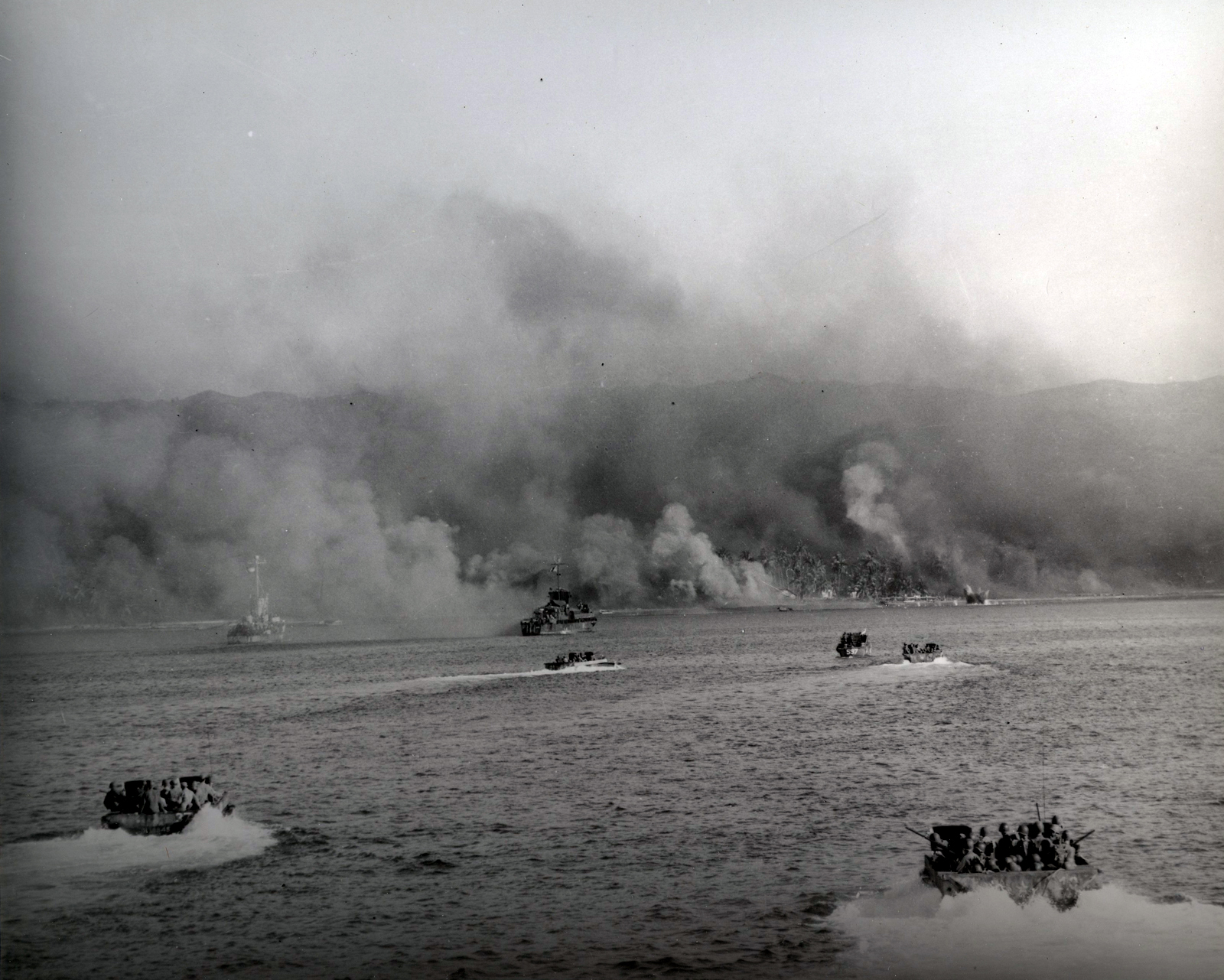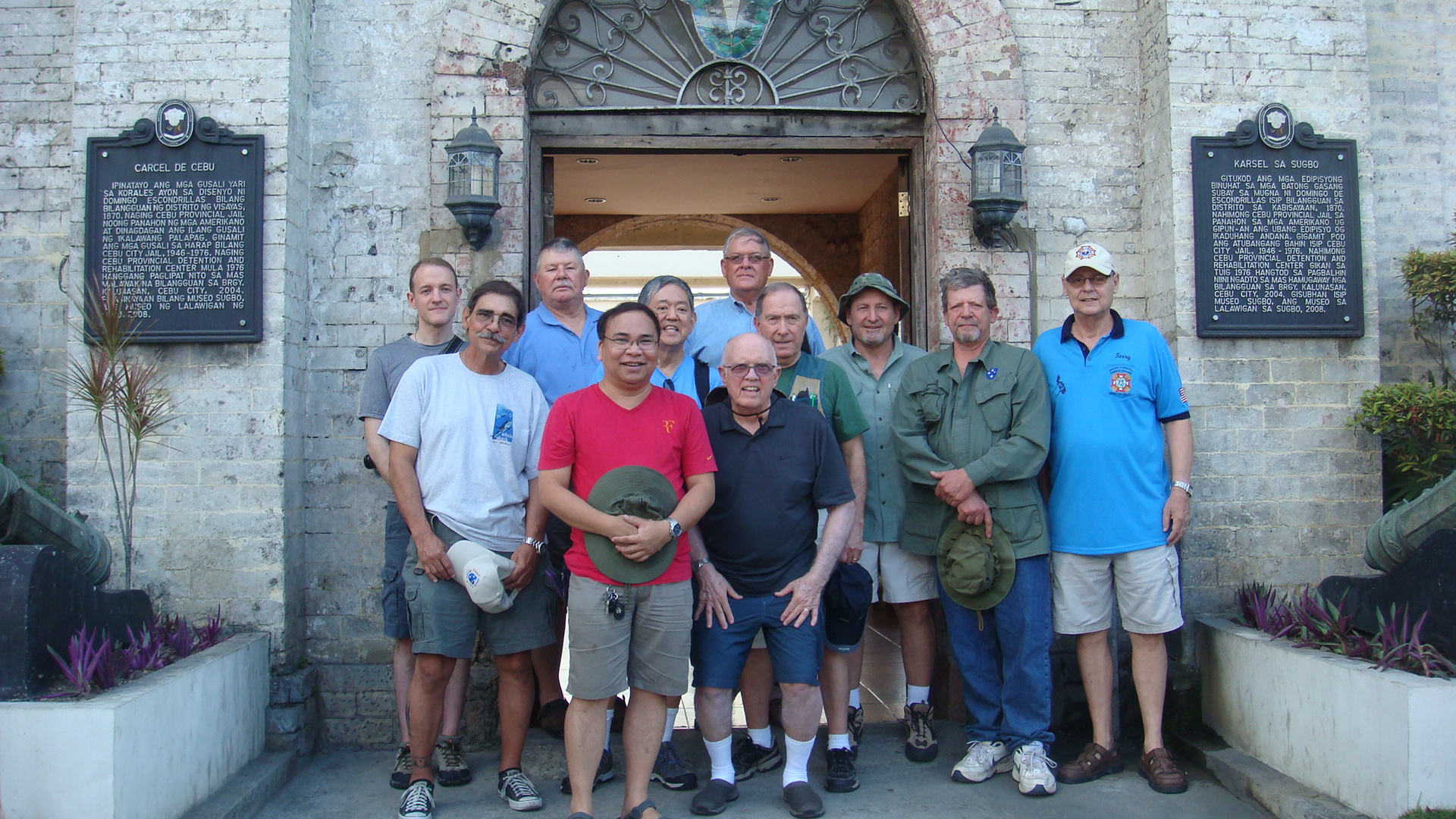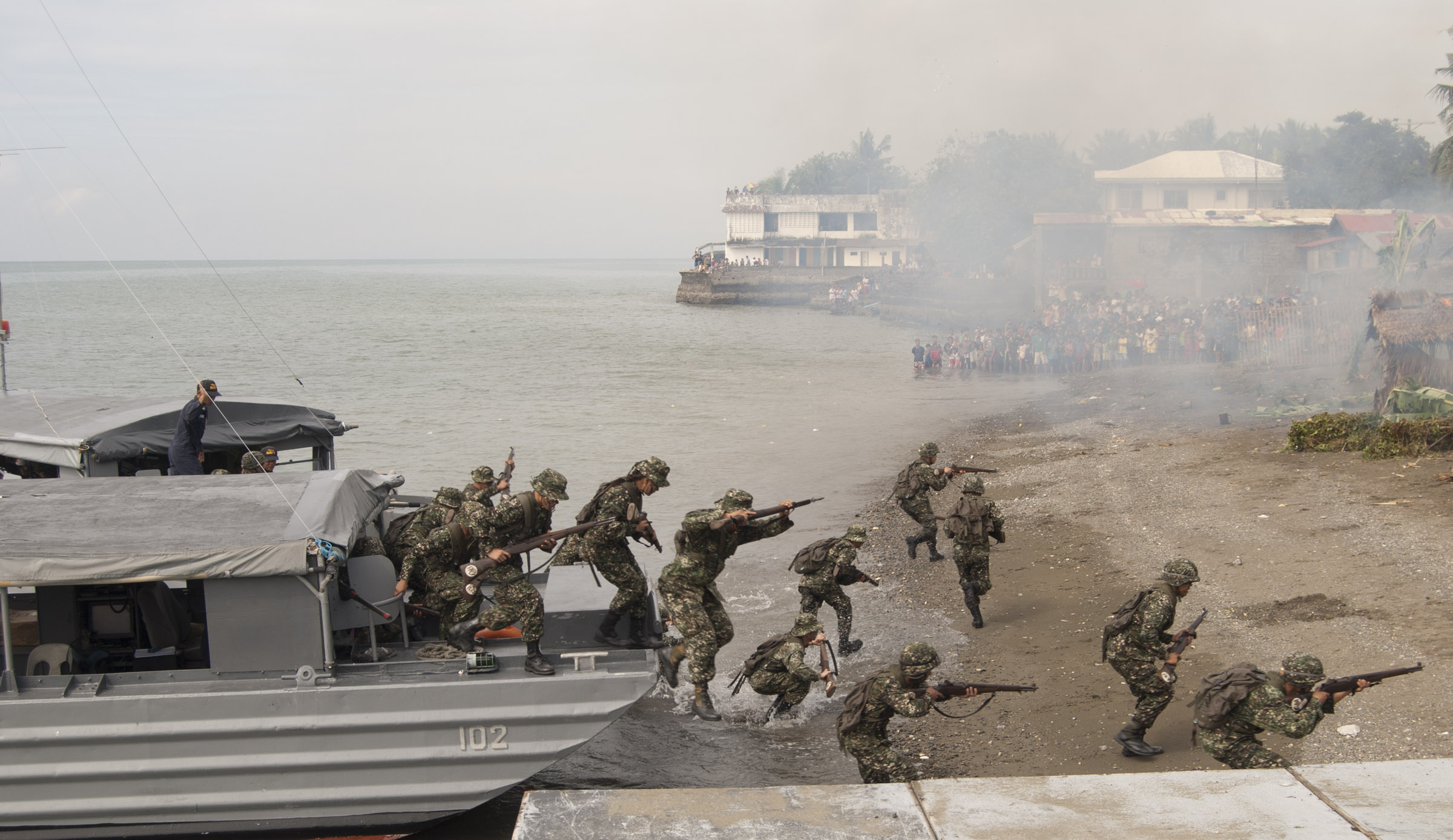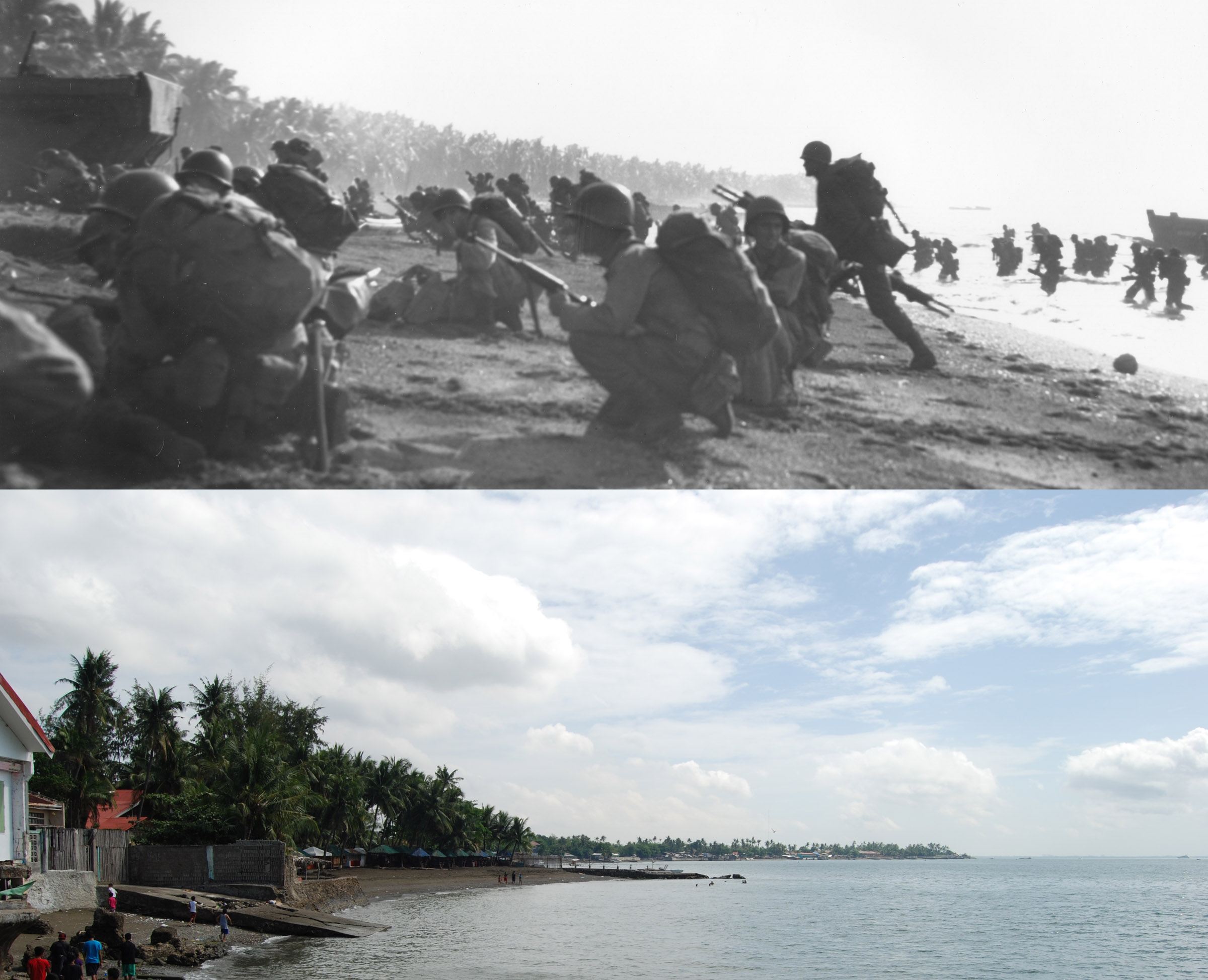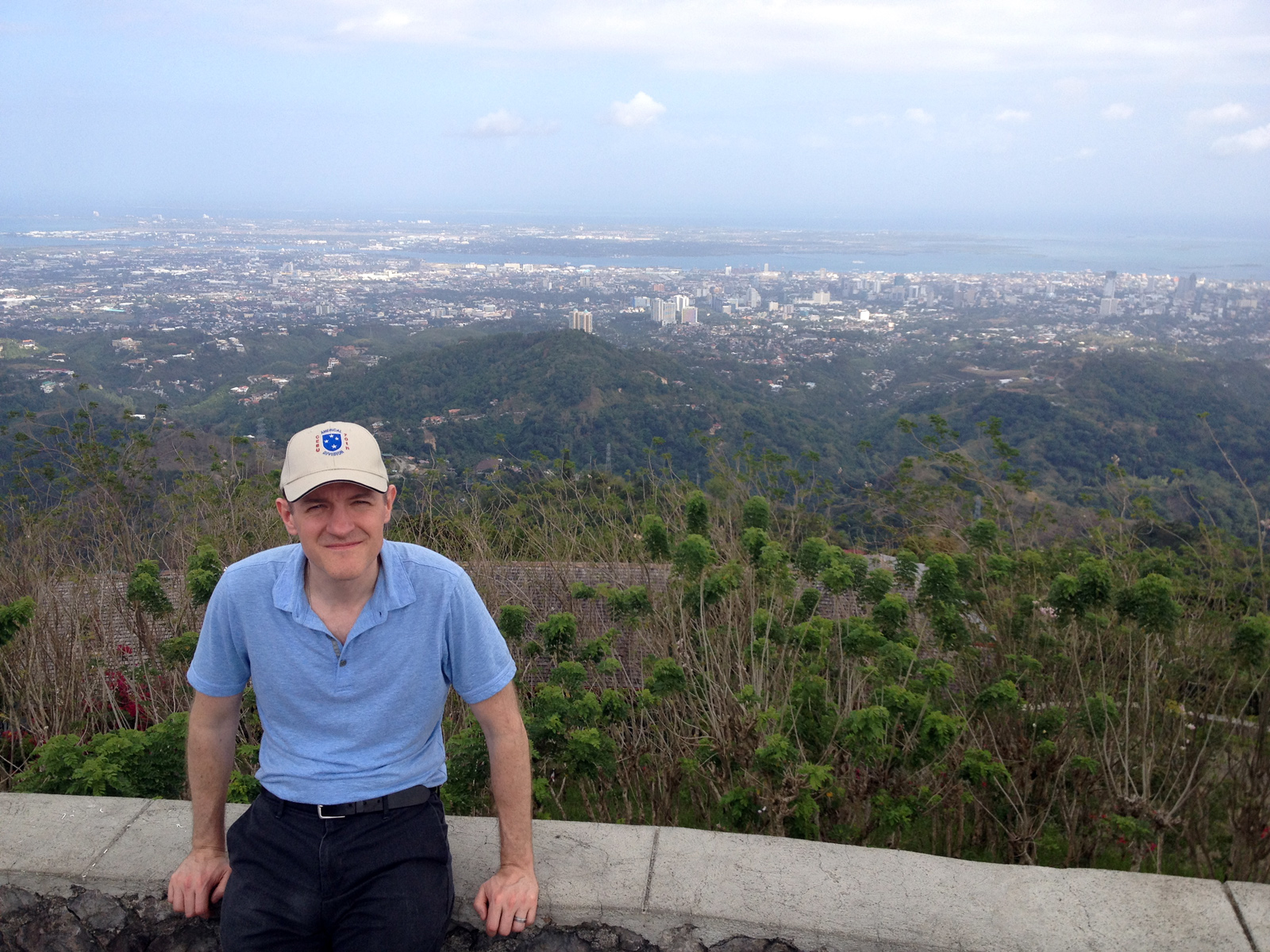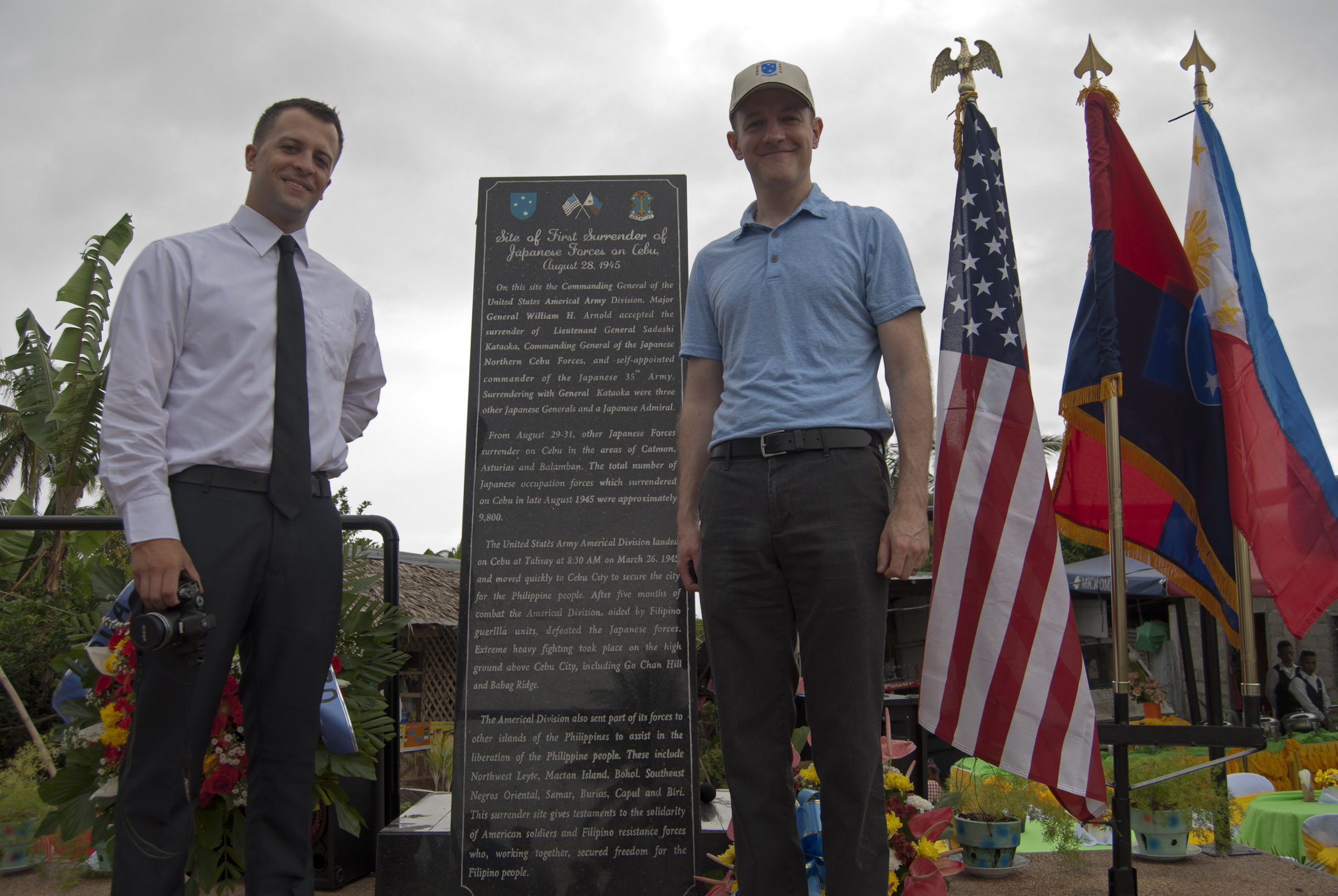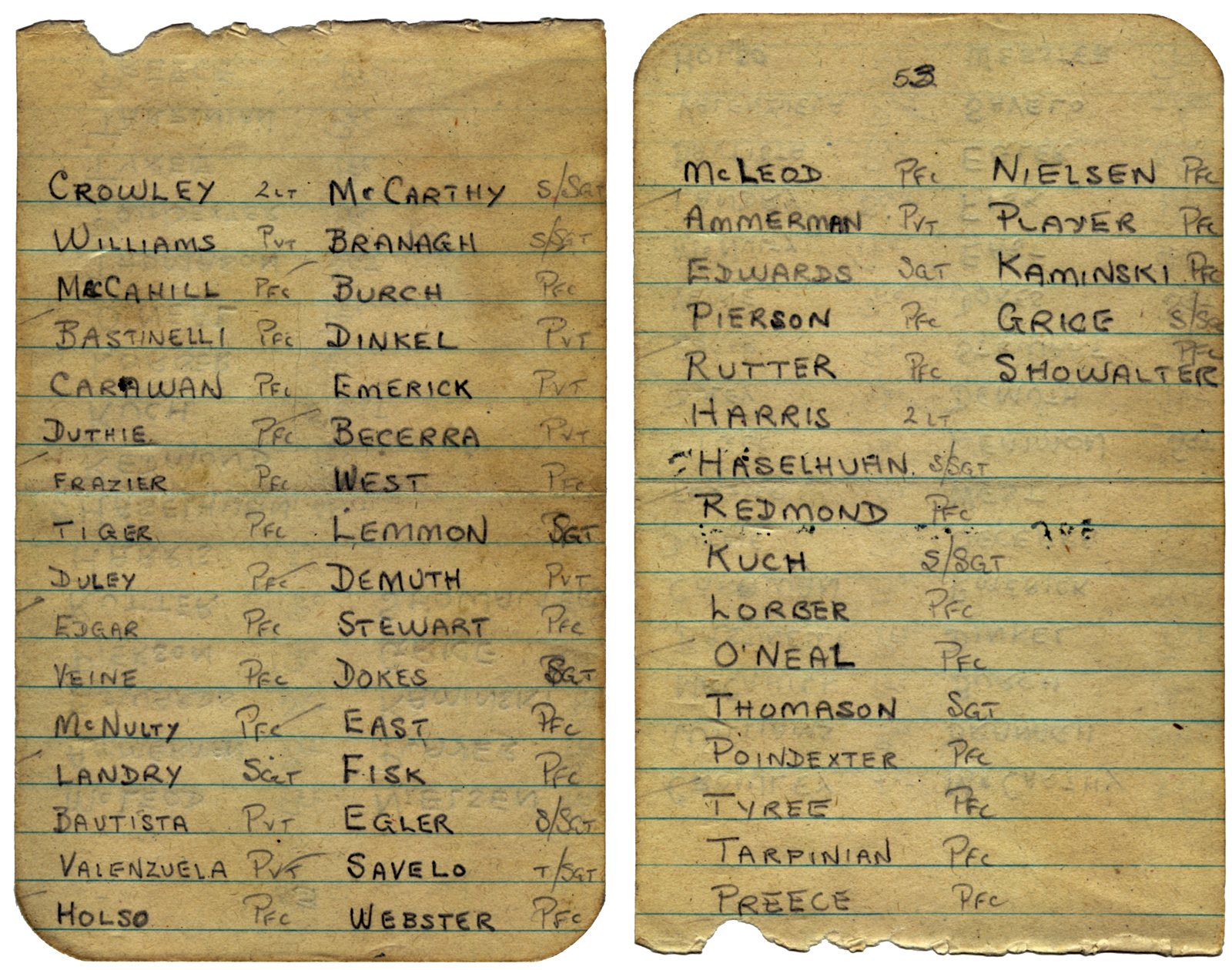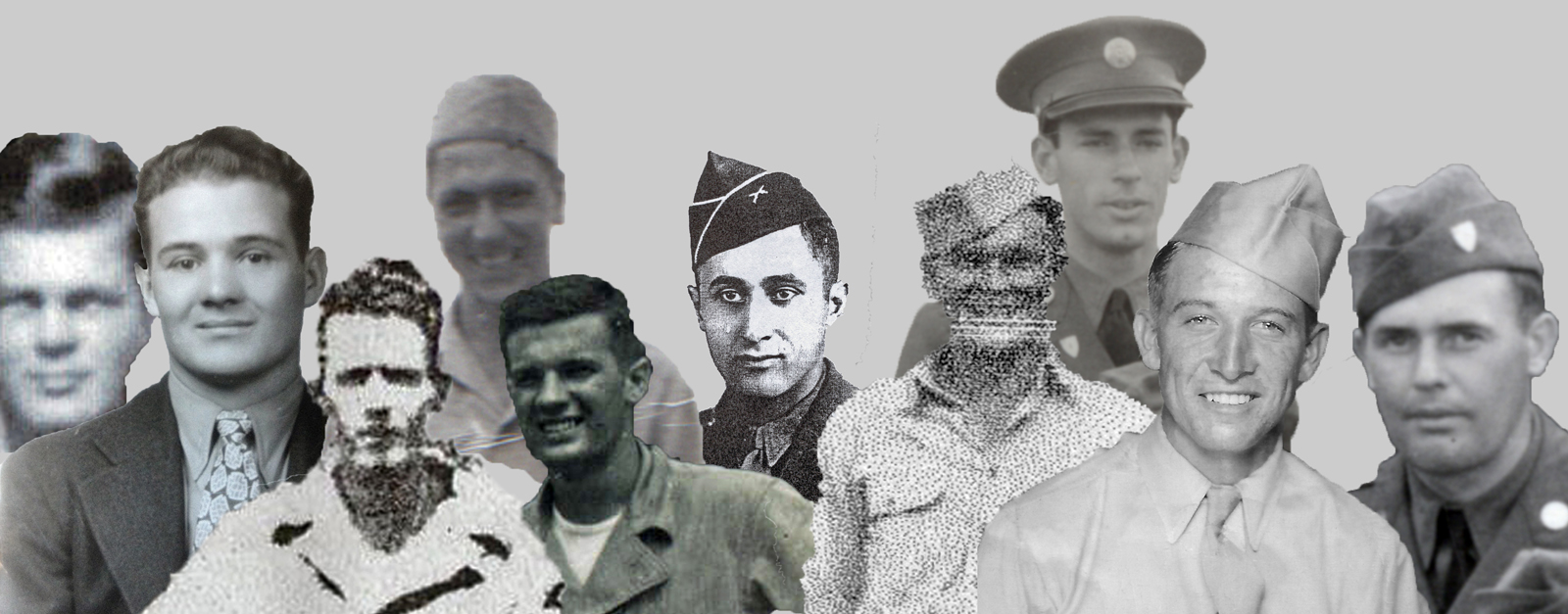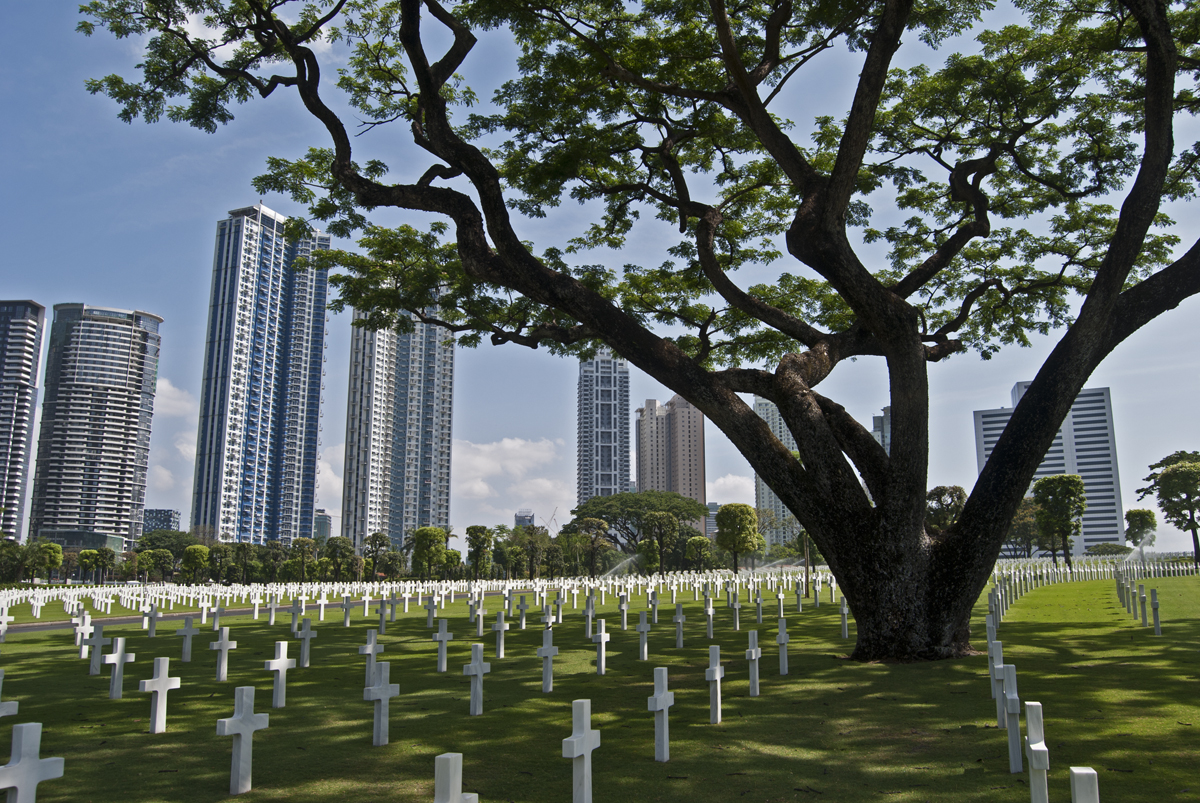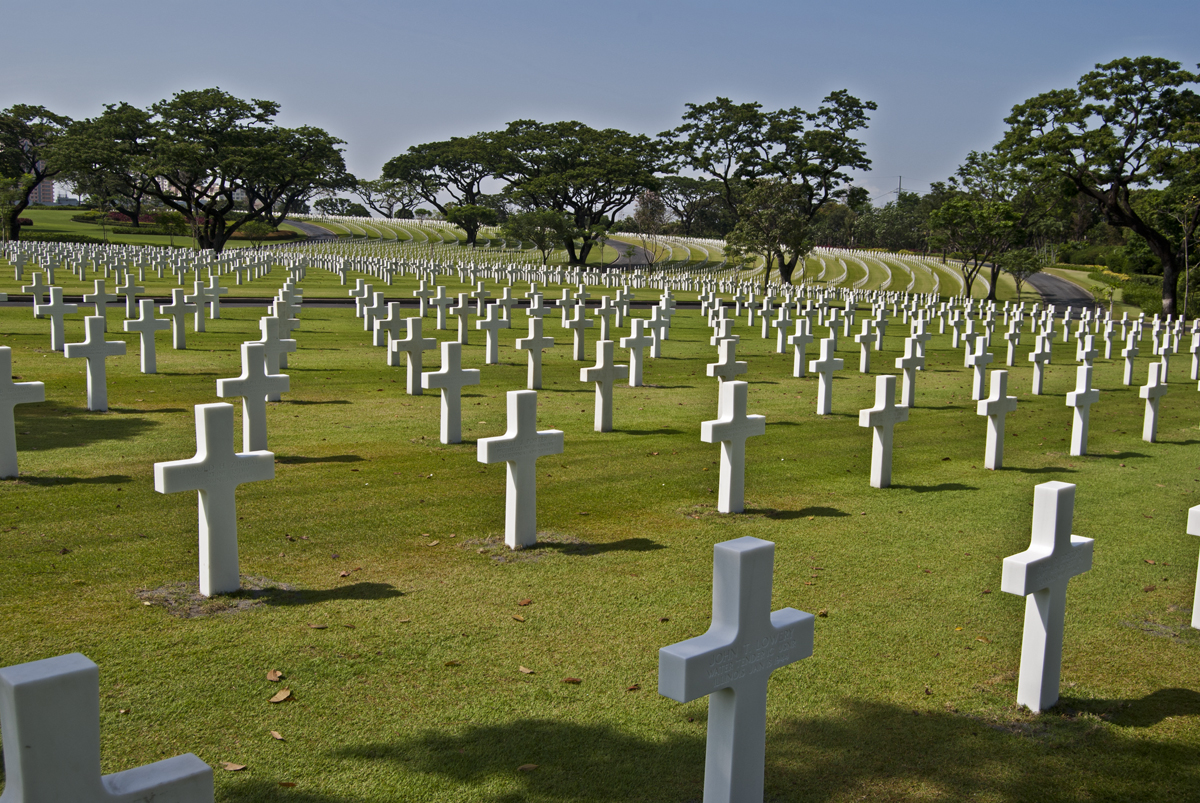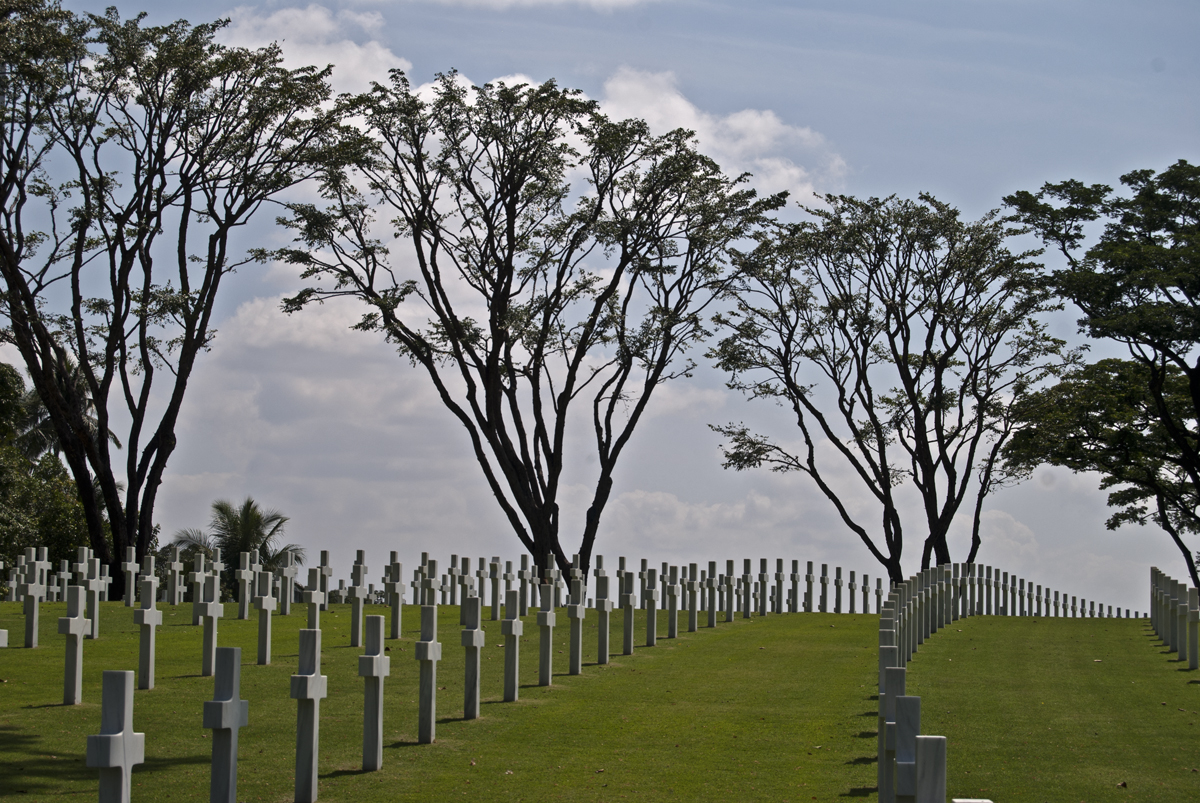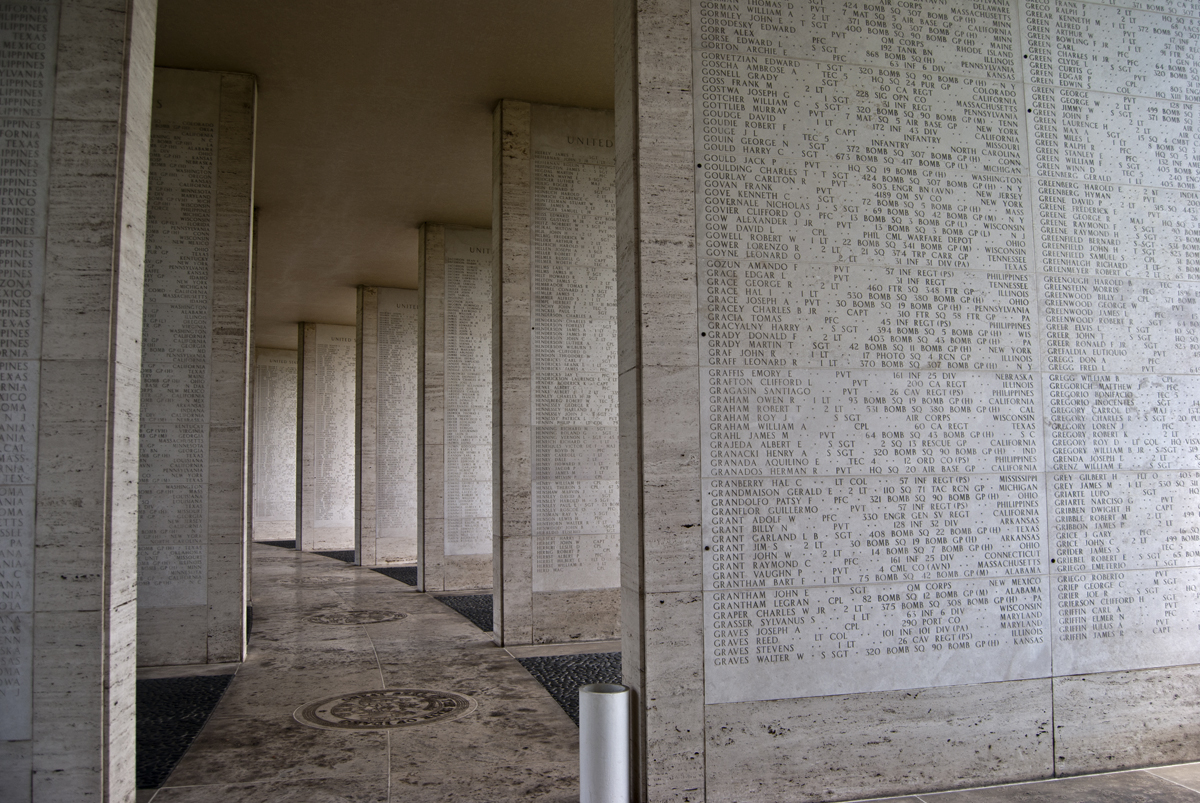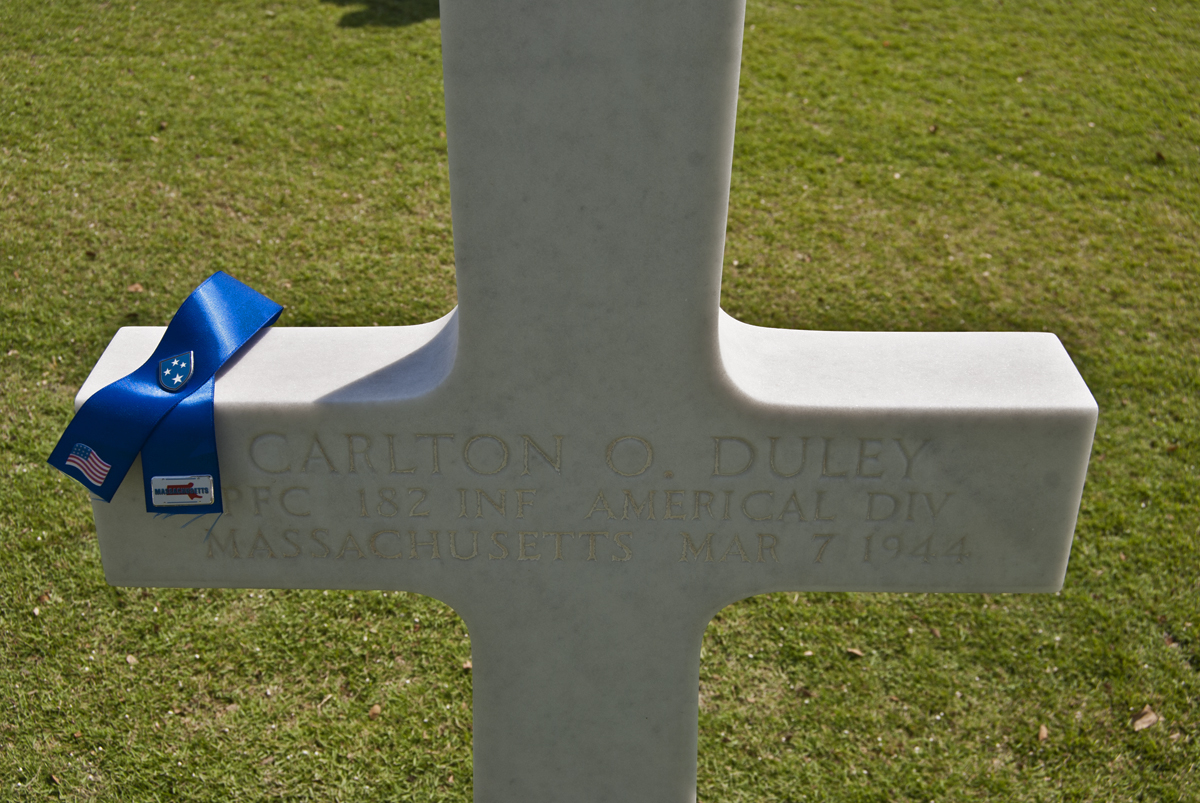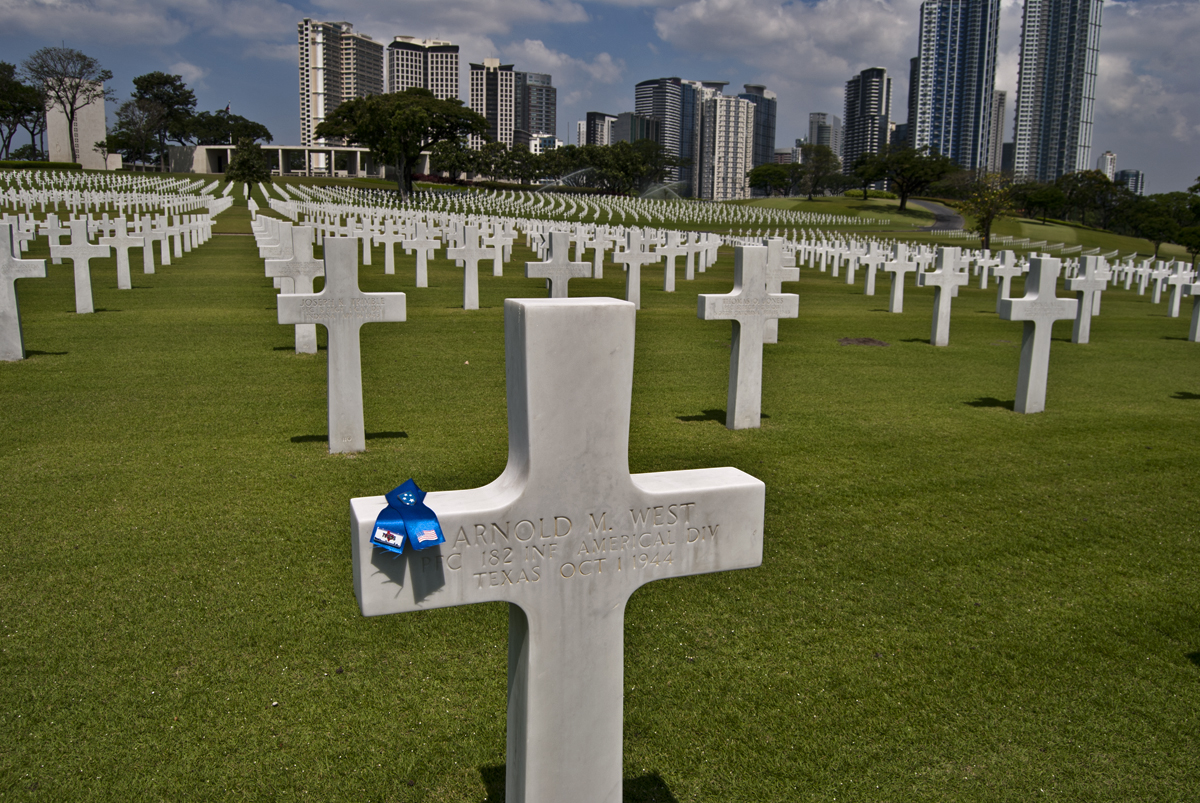In March 2015, I had the amazing opportunity to visit Cebu, an island in the Philippines. Along with a group of men from the Americal Division Veterans Association (all veterans of the war in Vietnam), I spent a week on the island touring sites with ties to World War II. This included several locations where the 182nd Infantry engaged in combat. It was a very emotional experience for me, retracing the footsteps of my grandfather, Ed Monahan. He served as First Sergeant for Company G of the 182nd on Cebu, from their amphibious landing in March 1945, until he was rotated home on points in May 1945, with the heaviest fighting completed.
Over the next few weeks, I plan to post a short series of stories on the Cebu trip. I am going to post them in an order approximating the sequence of events that the fighting on Cebu occurred, rather than how our trip was scheduled. The first piece will look at the extravagant ceremonies hosted by the people of the Philippines to commemorate the 70th anniversary of the Americal Division’s landing at Talisay Beach, on 26 March 1945 (read Part I here). Next I’ll look at some of the sites in the urban center of Cebu City, which was seized shortly after the successful landing at Talisay (read Part II here). We’ll move from there into the imposing hills of Babag Ridge, scene of the bloodiest fighting of the campaign (read Part III here). A visit to the west coast of Cebu affords the chance to tour some World War II pillboxes and tank barriers (read Part IV here). And lastly, we’ll finish up with a piece on the dedication of a new monument at the spot where thousands of Japanese troops surrendered to the Americal at the end of the war (read Part V here).
The main purpose of our visit was to attend this new monument dedication. My grandfather was not present when the Japanese on Cebu surrendered to the Americal Division at the end of the war. So in a way, I saw this trip as a way for me to bring some symbolic closure to the war for him. On that last day in Cebu at the monument dedication, I did find that closure, in a deeply satisfying and emotional moment I’ll describe in my story on the ceremony.
After completing the Cebu portion of the trip, I had a brief stopover in Manila, where I visited the graves of men from Company G who were killed during the war. You can read that story here. To learn more about the battle for Cebu, read the story here. Please check back throughout the month as a I post the details of the 2015 trip. The journey begins with the reenactment of the Talisay Beach Landing.

